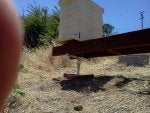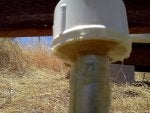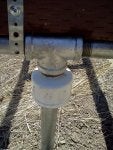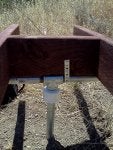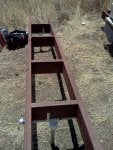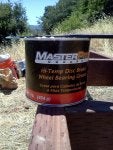After losing two nucs to ants I came up with a solution for those darn Argentine ants that raid hives here in California. I made "T's" with 1" galvanized pipe. At the bottom of the T joint, I slipped on 2" white PVC end caps after drilling holes in them. I hung them upside down on the pipe and filled them with high temp bearing grease that doesn't run in the heat. The rain won't be a factor because they're upside down under hives.
I pounded the pipe legs into the ground 2 feet deep. I secured the 2x6 PT frame to the T joints with plumbing strap. The cross members are resting on the T joints to better handle hive weight. NO MORE ANT PROBLEMS! (Sorry about the finger in the first pic)
![]()
![]()
![]()
![]()
![]()
![]()
I pounded the pipe legs into the ground 2 feet deep. I secured the 2x6 PT frame to the T joints with plumbing strap. The cross members are resting on the T joints to better handle hive weight. NO MORE ANT PROBLEMS! (Sorry about the finger in the first pic)
